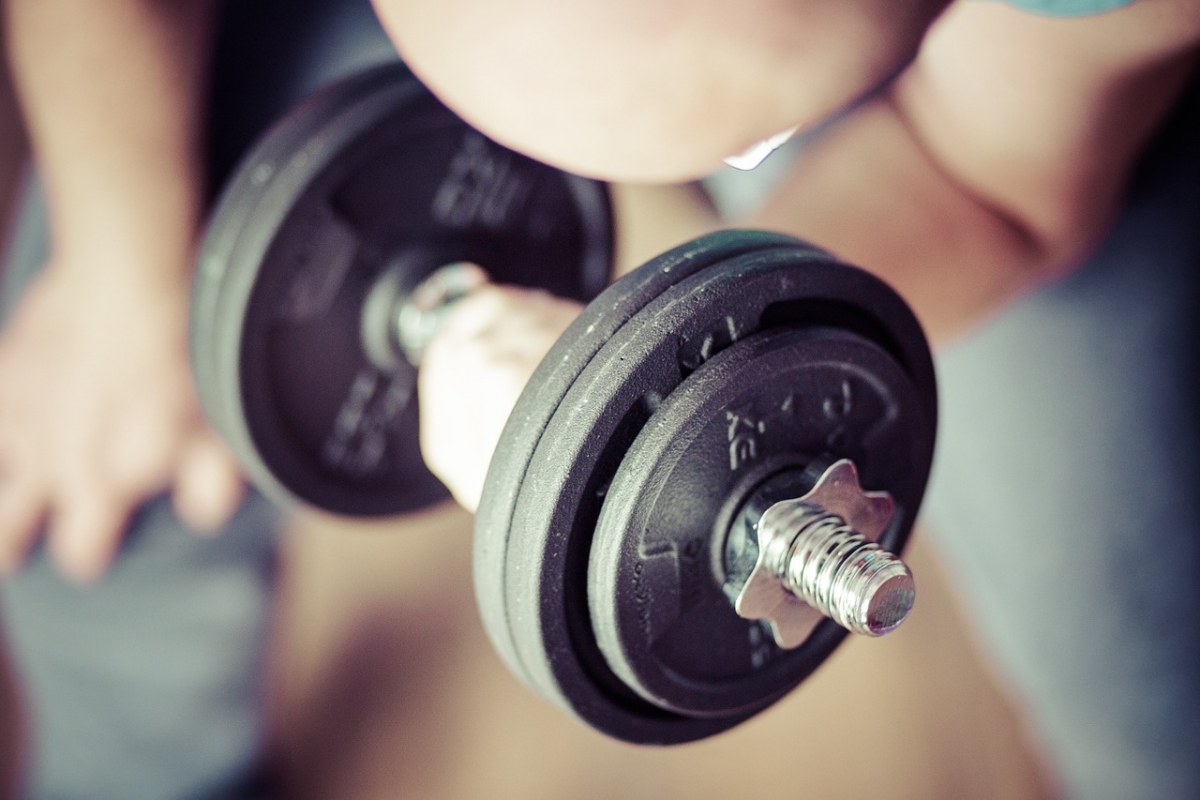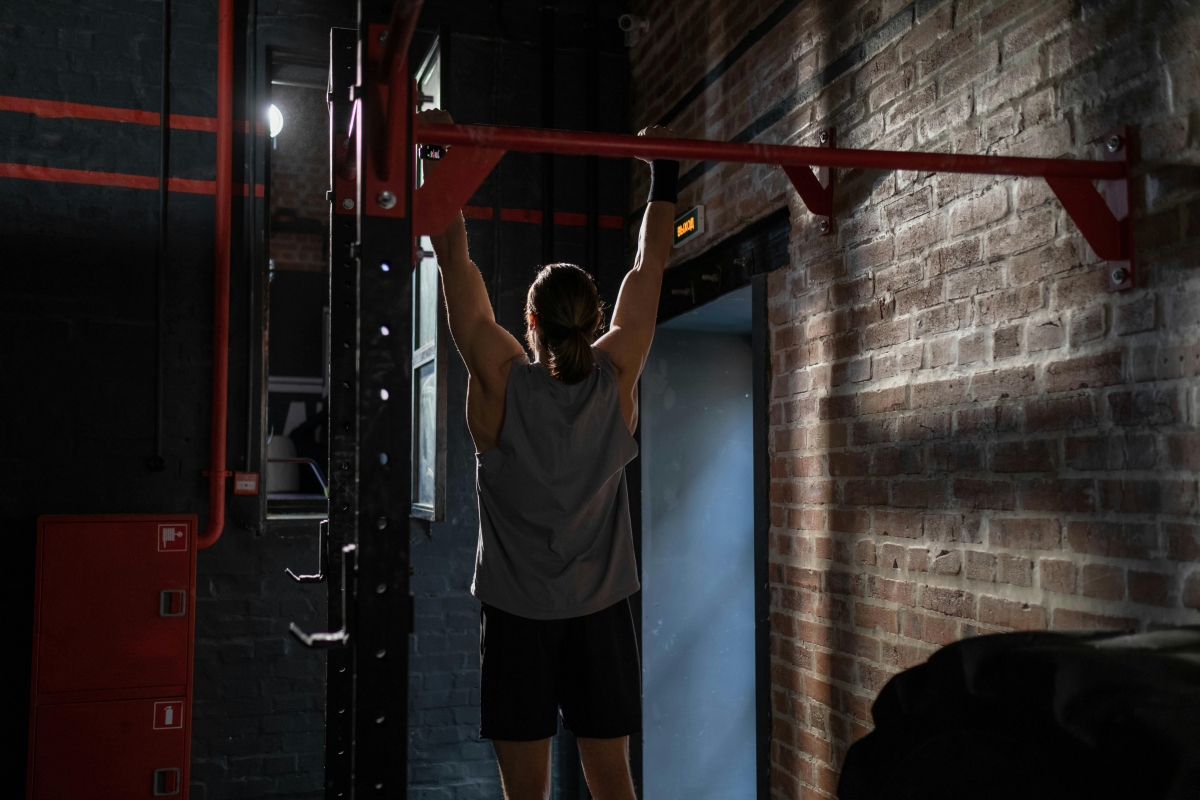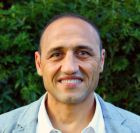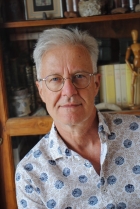Unlocking the power of sports: the impact of Olympic values in prison rehabilitation
Editor: Sylvain Laborde
Editorial assistant: Stella Wernicke, Ann-Katrin Hosch
This article has also been translated into French.
Discover how sports in prison foster
empathy, health, and social reintegration. By practicing with the Olympic Spirit, inmates find a means to reconnect and rebuild themselves. A
holistic approach that transcends barriers and provides a path to rehabilitation. Image 1: The Olympic spirit goes far beyond professional atheletes.
Image 1: The Olympic spirit goes far beyond professional atheletes.
On February 4, 2022, the Secretary-General of the United Nations (UN), António Guterres, congratulated the Olympic spirit of the athletes at the Beijing Winter Games in these terms: “It is my fervent hope that this spirit goes well beyond these Olympic Games, to remind everyone - participants and spectators - that we belong to the same human family [...] There is no limit to what we can achieve when we work together - for peace, for human rights, and for a healthy and well-being for all”. Over a century later, the words of Baron de Coubertin (founder of the modern Olympic Games) still resonate bitterly for modern societies in search of unity and peace. “What is this Olympic mindset? Olympians demonstrate mental dexterity and resilience; these traits are not necessarily inborn but are cultivated over time. Mental dexterity and resilience along with their individual skill sets separate Olympians from their peers in accomplishing their goals” [1]. Thus, it has always been expected of sports to embody the values of solidarity, cohesion, friendship, loyalty, effort, courage, respect [2]. And it is still this noble Olympic spirit of an educational and virtuous sport that will infuse the prison environment from the mid-20th century onwards. Before this period, the time for sports was indeed thought exclusively as an additional punishment to detention [3]. It took place during the exercise hour, where prisoners walked one behind the other at a dictated pace - an opportunity for the prison administration to further mark its power of coercion. Ultimately, before the mid-20th century, the prison continued to be a place of training and “meticulous control of bodily operations” [4, p. 139] to make them ever more docile [5]. Also, in the span of a century, prison sports went from being a punishment to being a liberation of the body. And it is precisely to transmit the values of solidarity towards even more well-being within the walls that the installation project of Street WorkOut (SWO) was launched in 2022 in penitentiary establishments in the Parisian region in France.
Metal structures in prison for sports
The SWO is a physical practice born in the United States in the 1990s, combining strength training, flexibility, and gymnastic agility in the tradition of calisthenics. This type of setup, materialized by a metal structure placed at the center of the exercise yards, has been implemented, first experimentally in 2022 in the detention centers of Poissy and Fleury-Mérogis, and later in Réau in 2023. This project, initiated by the Interregional Directorate of Penitentiary Services (DISP) in Paris with the support of the "Impact 2024" association, is on the verge of becoming widespread in other penitentiary institutions. It aims to use sports to promote well-being, civic engagement, inclusion, solidarity, equality, and the environment... in other words, the Olympic spirit.
Competitions in prison: exploring the Olympic spirit
On June 24, 2022, the first competition was organized remotely (via video conference) between teams of inmates from Poissy and Fleury-Mérogis detention centers. On October 23, 2023, another competition took place in person, this time at Fleury-Mérogis, bringing together inmates from Poissy, Fleury-Mérogis, and Réau detention centers. In both cases, inmates trained for these events, which we attended as spectators in the courtyard of Building D1 at Fleury. Over these two afternoons, we observed and engaged with several inmates to closely understand their experiences of self-transcendence and competition with others in the prison environment. Far from the stadiums, it was in prison that we sought to explore the Olympic spirit.
Opening ceremony and collective warm-up
In the presence of officials from the relevant institutions, the regional director of the penitentiary administration in Île-de-France opened the competition with a speech largely devoted to the constitutive values of the Olympic spirit. He was convinced of the importance of these challenges for the inmates and aimed to give them a certain solemnity. Before blowing the whistle for each of the two competitions, Charlie Abtouche, an athlete from the French Weightlifting and Bodybuilding Federation (FFHM), led a collective warm-up. Each time, the inmates participated calmly and with mutual respect. At the beginning, the inmates silently looked at each other, but gradually, with the warming up of bodies and the collective effervescence, singularities expanded to form a "we", a sign of mutual recognition. It is also noteworthy that during this initial phase, faces wore the mask of concentration. When asked later about this preparation moment, the same words—"I was thinking about the competition," "focused for what's next"—resonate as a refrain in the mouths of the inmates. This anticipatory ability is interesting in that it indicates they are fewer prisoners of the present and less intolerant to frustration [6], but more capable of projecting themselves. Developing this skill through sports is learning to better align with others' expectations and, consequently, improving social cohesion [7]. After the warm-up phase, Charlie delivers an impressive display of strength, flexibility, balance, style, and endurance. Like spectators in a stadium, the onlookers, leaning on their cell windows, engage in the event initially with cheers, then with silence, and finally with applause. The Olympic spirit of unity around the excellence of a performance makes complete sense here, fostering sharing and cohesion.
Solidarity and encouragement in competitions
The demonstration gives way to an explanation of the planned challenge, formatted as a "Physical Battle" - remotely in June 2022 and live in October 2023. The competition includes pull-ups, push-ups, and one-legged squats. For each exercise, representatives from each team have a specified time to complete as many repetitions as possible. And so it begins; the inmates take turns facing the challenges. Those struggling receive enthusiastic encouragement from their teammates and the observing inmates from their windows. Regarding encouragement, the guards also play their part. They offer advice with words like, "Remember the training sessions... Engage your core... Take your time, there's no need to rush... Save your energy..." These exchanges are interesting in that they create conditions for resonance, a "phenomenon that occurs when several people are in unison with each other—primarily on a non-verbal level" [8, p. 192]. From this perspective, sports practices are excellent spaces for emotional resonance and collective fervor. Indeed, as soon as one completed their set, supported by cheers and “go for it, you were awesome, brother” expressions, others—exhausted from their efforts just minutes earlier or awaiting their turns—showed support with words, sometimes accompanied by warm taps on the shoulder. Each person, observing their comrade in action immediately after, could then experience the same emotions. In a ritual-like manner, aligning with each other, the shared emotions created solidarity—a necessary ingredient for societal cohesion [9].
 Image 2: The "Physical Battle" consists of bodyweight exercises such as pull-ups.
Image 2: The "Physical Battle" consists of bodyweight exercises such as pull-ups.
Solidarity and camaraderie: team spirit in prison
The exercises follow one another, as do the shared experiences of emotions, exchanges, and encouragements. Despite being exhausted, no one gives up. The participants go all the way, unrelenting, not only to maintain their dignity but also to secure a victory for their team. At the beginning of the afternoon on October 23, 2023, when the competition started, each team occupied a specific and spatially circumscribed place. Soon, the SWO becomes the center of attention. Movements, changes in competitors, and the willingness of everyone to approach for a front-row seat transcend the initial belonging to distinct groups. Everything happens as if shared experiences blurred the differences to feel part of the "same human family" mentioned earlier by António Guterres. It is likely this sense of forming a group and psychological
safety that made exchanges without barriers possible, as evidenced by Rico's statements from June 2022.
Rico has just completed a set of push-ups to the cheers of his comrades. He recovers, quenching his thirst in large gulps,
feeling the
warmth. It is revealed that he regularly performs pull-ups on bars affixed to one of the walls in the exercise yard. "When I'm here, I try to do sets; it's better than in the cell, you know..." He also explains that he imposes exercises every day "to stay in shape, hold on... and prepare for release." Then, very spontaneously, he compares his exercises against the wall with the recent practice on the SWO:
"You see over there [against the wall] when you do pull-ups, it's one at a time... You go, you do your thing, you make way, you wait, you go again... In reality, you're alone... I've been here for about a year, haven't met many people... Whereas here, since they installed that [SWO] in the middle of the yard, you practice at the same time as others, you see... Several can be doing pull-ups, helping each other... when you do tough things together, it gives you strength, you see, it's hard for the other person too, you're not alone... It motivates you, and besides, you make connections... You talk. And today, we're a team... Whereas before, you practiced alone..."
From this perspective, Rico's case is not isolated. Other inmates encountered during these two competitions testify to the changes in their practice (more enjoyable) and interactions (more frequent) with other inmates, as well as with the guards, made possible by the installation of this new equipment. This is also the viewpoint of an official from the Poissy prison: “The installations are popular because we are together and at the center”.
Sport in prison: empathy, health, and reintegration
Apparently, the collective experience of the difficulty generated by exercises performed together, in addition to developing subjectivities, expressing oneself, and putting feelings into words, contributes to opening up to others, considering them, and, if necessary, helping them. In this case, it seems as if the inmates feel
empathy towards their fellow inmates, a disposition they likely lacked at the time of the actions that led them behind bars [10]. While the observations provided an opportunity to grasp the Olympic spirit described earlier by António Guterres, the introduction of SWO in the exercise yards also had more individual effects, especially on health. This is evidenced by the case of an inmate who lost 30 kilograms (66 pounds) since his incarceration and strongly emphasizes the positive impact of sports on his physical health. Clearly, for inmates, a sufficient and supported sports program offers the opportunity to develop the physical literacy necessary for considering individual health.
If sports, when practiced with the “Olympic Mind”, bring a range of benefits in terms of individual and collective well-being within prison walls, it is also noteworthy that it constitutes a good means to prepare for release, that is, for reintegration. Shah and Umaraniya emphasize the essential role of well-being in the rehabilitation process, stating: "Well-being is the first primitive step towards rehabilitation" [11, p. 5]. Furthermore, while sports can indeed contribute to well-being and give meaning to the time of incarceration, it can serve as a shield against radicalization, as research [12] shows that engagement in this process often originates from an existential quest. Practicing sports in a group to feel good about oneself and with others can, in some cases, provide an answer to this quest and prevent extreme actions with their known disastrous consequences.
Conclusion
It is clear that sports activities in prison, when practiced with the Olympic Spirit, offer a multitude of benefits both individually and collectively. Indeed, the collective experience of shared physical effort promotes
openness to others and strengthens solidarity among inmates. This dynamic contributes to developing social skills such as
empathy, which can potentially facilitate the reintegration process into society [13]. Furthermore, the positive impact of sports on inmates' physical health cannot be underestimated, as evidenced by the case of an inmate who lost weight through regular practice. Lastly, sports can also play a crucial role in preventing radicalization, providing a constructive alternative for those seeking meaning in their lives behind bars. In summary, integrating sports into the prison environment, with a genuine
commitment to Olympic values, can truly contribute to promoting the individual and collective well-being of inmates, while fostering their rehabilitation and social reintegration.
Bibliography
[1] T. T. Hughes and B. Habersleben, “A chiropractor’s dream : The Teen Summit and the Green Hub Project for Teens. Journal od Clinical Chiropractic Pediatrics,” vol. 20, no. 1, pp. 1733‑1739, 2021, https://jccponline.com/JCCP20--01.pdf#page=15.
[2] H. Hammond, R. Meek, R. and E. Glorney, “Healthy prison cultures : Factors influencing male prisoners’ engagement in exercise and subsequent healthy behaviours,” International Journal of Prison Health, 2023, doi:10.1108/IJOPH-01-2023-0003.
[3] L. Gras, “Le sport en prison,“ Editions L’Harmattan, 2005.
[4] M. Foucault, “Surveiller et punir: Naissance de la prison,“ Gallimard, 2003.
[5] J. E. McGee, “Rejecting the Paradigm: Reimagining the Philosophy of Punishment To Address the Criminal Justice Crisis in Twenty-First Century America,” 2022.
[6] S. Bohler, “Le Bug humain,“ Robert Laffont, 2019.
[7] M. Mutz and J. Müller, “Health Decline in Prison and the Effects of Sporting Activity : Results of the Hessian Prison Sports Study”, 2023, https://www.ssoar.info/ssoar/bitstream/handle/document/85271/ssoar-2023-....
[8] H. Rosa, “Résonance : une sociologie de la relation au monde,” La Découverte, 2018.
[9] E. Durkheim, “Sociology and Philosophy,” Routledge, 2009, doi:10.4324/9780203092361.
[10] O. Zanna, “Restaurer l’empathie chez les mineurs délinquants”, Dunod, 2010, https://www.librairie-gallimard.com/livre/9782100552306-restaurer-l-empa....
[11] C. B. Shah and S. Umaraniya, “Beyond those Towering Walls: Architecture of Imprisonment and Human Well-being,” in Future is Urban : Livability, Resilience & Resource Conservation : Proceedings of the International Conference on FUTURE IS URBAN: Livability, Resilience and Resource Conservation (ICFU 2021), p. 1, Taylor & Francis, 2023.
[12] D. Bentrar and O. Zanna, O. “Pourquoi le salafisme attire-t-il certains jeunes? The Conversation,” 2023, http://theconversation.com/pourquoi-le-salafisme-attire-t-il-certains-je....
[13] K. Maier and R. Ricciardelli, “Prison didn’t change me, I have changed: Narratives of change, self, and prison time,” Criminology & Criminal Justice, vol. 22, no. 5, pp. 774‑789, 2023, doi:10.1177/17488958211031336.
Images
All images were generated using Leonardo.Ai (https://leonardo.ai/) and are free for commercial use (see https://intercom.help/leonardo-ai/en/articles/8044018-commercial-usage).
Image 1 SOURCE: Pixabay https://pixabay.com/photos/exercise-weightlifting-2728338/
Image 2 SOURCE: Photo by cottonbro studio: https://www.pexels.com/photo/man-doing-pull-ups-7672092/



